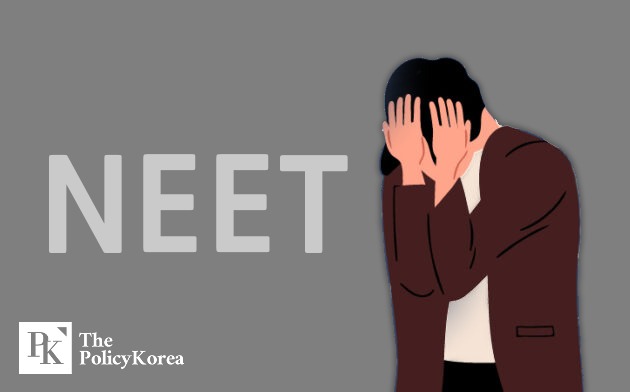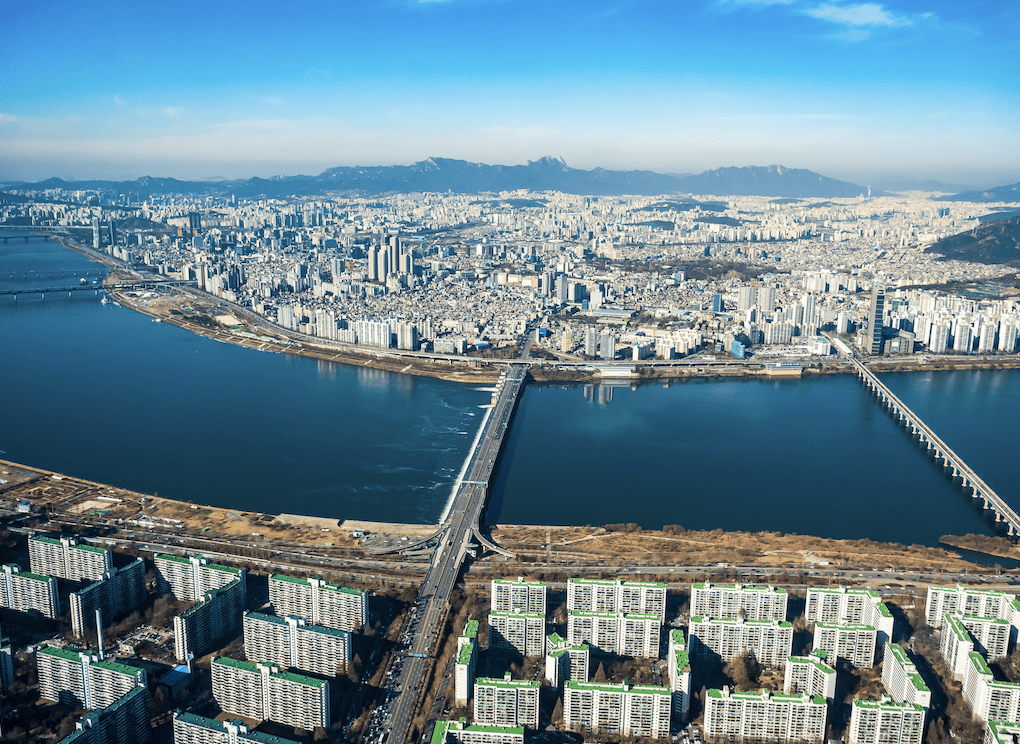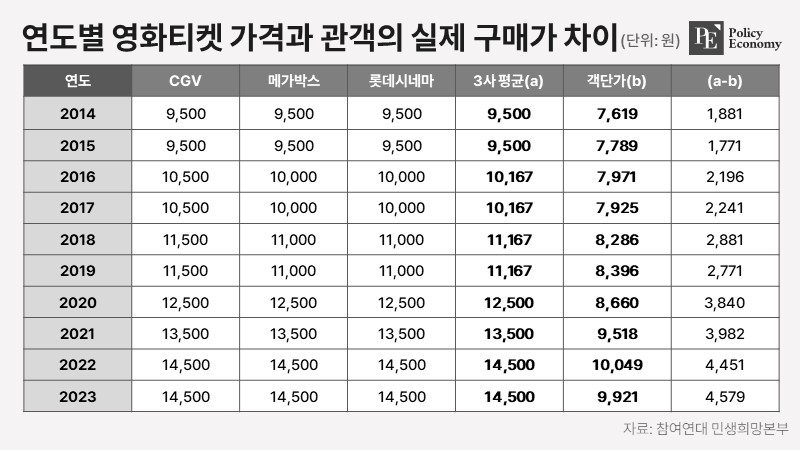[동아시아포럼] 동아시아 산업정책과 새로운 도전 및 전망
1993년 세계은행, 동아시아 8개국의 경제 성장 비결 분석 1997년 동아시아 금융위기 맞아, 과도한 정부개입 등 비판 30년 지난 현재 동아시아 국가들, 적극적인 산업정책 전개
[동아시아포럼]은 EAST ASIA FORUM에서 전하는 동아시아 정책 동향을 담았습니다. EAST ASIA FORUM은 오스트레일리아 국립대학교(Australia National University) 크로퍼드 공공정책대학(Crawford School of Public Policy) 산하의 공공정책과 관련된 정치, 경제, 비즈니스, 법률, 안보, 국제관계에 대한 연구·분석 플랫폼입니다. 저희 폴리시코리아(The Policy Korea)와 영어 원문 공개 조건으로 콘텐츠 제휴가 진행 중입니다.
1993년 세계은행은 1965년에서 1990년대까지 일본, 한국, 싱가포르, 대만, 홍콩, 인도네시아, 말레이시아, 태국 등 8개국의 고도성장을 분석한 동아시아의 기적(The East Asian Miracle) 보고서를 발표한 바 있다. 보고서는 한국을 비롯해 일본, 싱가포르, 대만, 홍콩 등 아시아 4개국을 고도성장과 소득 격차 해소를 동시에 이룬 국가로 평가했는데, 해당 보고서 발표 이후 동아시아 산업정책의 강점을 논의하는 수많은 연구가 등장하기도 했다.

인도네시아 ‘후방산업화 전략’, 말레이시아 ‘NIMP2030’ 추진
세계은행의 분석을 지지하는 사람들은 이른바 ‘아시아의 호랑이’로 명명한 한국, 홍콩, 싱가포르, 대만의 성공이 자국의 산업을 보호·육성하는 데 초점을 둔 무역정책, 그리고 자본시장과 노동시장의 규제 등 선별적인 산업정책 덕분이라고 주장한다. 반면 비판론자들은 해당 국가들의 경이로운 성장은 안정적인 거시경제 정책, 균형 있는 인센티브 지원에 기반한 수출 진흥 모델, 나아가 인적자본 형성에 대한 노력 등 ‘전통적인 경제이론’이 제시한 전략에 따른 결과라고 반박한다. 정부가 주도하는 산업·무역정책의 영향이 아니라 시장경제의 원칙이 원활하게 작동할 수 있도록 하는 안정적인 경제정책을 추진했기 때문이라는 것이다. 그러나 보고서가 발간된지 5년이 채 지나지 않은 1997년 하반기부터 IMF(국제통화기금) 외환위기 등 동아시아 전역이 금융위기를 맞게 됐고 동아시아 모델에 내재된 과도한 정부 개입 등 일부 비시장적인 요소들이 위기의 요인으로 비판받게 됐다.
30년이 지난 지금은 어떨까. 동아시아 국가들은 다시 적극적인 산업정책을 전개하고 있다. 그도 그럴 것이 한때 견조한 성장세를 보였던 인도네시아는 올해 3분기 성장률이 4.9%를 기록하면서 8분기 연속 5%대 성장률 달성에 실패했다. 성장 둔화가 우려되자 조코 위도도 인도네시아 대통령은 자국에서 생산하는 원자재를 가공해 수출하는 ‘후방산업화’ 전략을 추진하고 있다. 이 전략은 인도네시아의 새로운 산업정책인 ‘2025-2045 국가장기발전계획(2025–45 National Long-Term Development Plan)’의 시금석이 됐다. 전기차 배터리의 핵심 광물인 니켈 생산 1위 국가인 인도네시아는 후방산업화 전략의 일환으로 2020년부터 니켈 원광의 수출을 금지하고 대신 국내에 제련소를 지어 가공해 수출하도록 했고, 그 결과 실제 가공된 니켈의 수출이 크게 증가했다. 이에 인도네시아 정부는 니켈에 이어 알루미늄의 원료인 보크사이트 원광의 수출을 중단했으며 내년에는 주석, 구리, 금 등 다른 광물의 원광과 원유, 해조류 등으로 수출 금지 조치를 확대할 예정이다.
말레이시아의 상황도 크게 다르지 않다. 말레이시아는 ‘신산업 마스터플랜 2030(New Industrial Master Plan 2030, NIMP 2030)’은 경제 복잡성 제고(advance economic complexity), 첨단산업 육성, 고숙련 일자리 창출, 중소기업 경쟁력 강화 등 6개 목표를 제시했다. 반도체, 화학, 항공 등 핵심산업에서 혁신기업 육성과 R&D 강화를 통해 고부가가치 밸류체인으로 구축하고 특히 반도체 부문에서는 향후 한국, 일본, 중국, 미국 등 선도국과 경쟁할 수 있는 역량을 육성하는 데 초점을 뒀다. 이와 함께 혁신적인 민간경제 시스템을 구축하기 위해 경제 구조의 재조정, 글로벌 투자처로서의 경쟁력 확보, 빈곤율 퇴치 등을 강조하고 있다.
美·EU 등 글로벌 공급망에 영향, 이에 대응하는 산업정책 마련
과거의 산업정책은 주로 국내 중심이었던 데다 핵심산업의 육성을 위해 특정 부문에 보조금을 몰아주는 방식이 주를 이뤘다. 이렇게 육성된 핵심산업의 수출이 늘어나면서 국가의 무역활동이 확대됐고 국경을 넘어 글로벌 공급망에 영향을 미치면서 국가의 산업정책과 무역정책이 연동해 작동하기 시작했다.
하지만 최근의 산업정책은 수입관세 등과 같은 과거의 적극적인 개입 방식과는 달리 상업적 목적에 따라 다양한 형태를 취하고 있다. 가장 많이 사용되는 전략은 무역 금융, 국채 발행, 보조금 지급, 해외시장 진출을 위한 재정 지원, 현지 조달, 대출 보증, 수입 관세 등이 있다. 특히 인도네시아, 베트남, 태국, 말레이시아, 중국 등의 국가에서는 자본 증자, 지분 확보, 반덤핑 관세, 세금과 사회보험료 감면, 국채, 보조금 지급 등의 정책이 자주 사용된다.
동아시아 국가들이 이처럼 다시 적극적인 산업정책을 전개하는 데는 몇 가지 이유가 있다. 먼저 글로벌 금융 위기와 코로나19 팬데믹 등에 따른 경제적 충격으로 미국과 유럽 주요국에서는 정부가 나서 핵심산업을 육성·확장하는 사례가 늘어나고 있어서다. 지난해 미국은 인플레이션 감축법(IRA) 등과 같이 반도체 공급망과 고용에 관한 새로운 법률을 도입했고 올해 2월에는 유럽연합(EU) 집행위원회가 ‘그린딜 산업계획(Green Deal Industrial Plan)’을, 중국은 자국의 제조업 발전 정책인 ‘중국 제조 2025 이니셔티브(Made in China 2025 Initiative)’를 각각 발표했다. 이 과정에서 글로벌 무역 시스템이 더욱 세분화되면서 WTO의 기능은 약화됐다. 회원국들 사이에서 WTO의 설립 취지와 세부 규정을 준수하지 않는 무역 조치를 도입하기 시작한 것이다. 이처럼 주요 경제 대국들이 글로벌 공급망에 영향을 미치는 새로운 산업정책을 추진함에 따라 각국 정부는 해당 국가들의 요구를 수용하고 공급망의 변화에 대응하기 위해 자국의 산업정책을 확대하려는 움직임이 나타나고 있다.
정책 입안자들의 잘못된 역사 인식도 산업정책에 영향을 미쳤다. 강대국들은 역사적으로 자국이 제조업을 보호하는 전략을 채택하면서 경제발전에 성공했다는 잘못된 믿음으로 적극적인 산업정책을 지지하는 주장에 힘을 실어 왔기 때문이다. 또한 국가의 역사적 패러다임과 정치적 아젠다도 영향을 미쳤다. 일례로 현재 보호무역주의 논란이 있는 인도네시아의 후방산업화 정책은 과거 네덜란드의 식민지였던 역사와 무관하지 않다. 뿌리 깊은 민족주의와 자급자족의 역사로 인해 보호무역주의 형태의 산업정책은 정치적으로 인기가 있었던 만큼 인도네시아 정부도 국민들의 지지를 얻기 쉬운 정책을 채택할 수 있었던 것이다. 실제 지난 6월 IMF는 인도네시아에 니켈 원광의 수출 금지 정책을 단계적으로 폐쇄할 것을 권고했지만 인도네시아 정부는 “단순한 권고가 아닌 현대 식민주의”라며 “우리가 원자재를 내보낸다는 것은 여전히 식민지배를 받고 있다는 의미”라고 반발한 바 있다.
과거 실폐 사례를 거울삼아 각 나라에 맞는 산업정책 도입해야
동아시아 국가들의 산업정책은 대부분 국내 시장의 부가가치를 제고하고 글로벌 밸류체인에서 수직계열화(vertical integration) 이루는 데 초점을 두고 있다. 하지만 시장지배력을 높이기 위해 재화 생산과 분배의 여러 단계를 통합·운영하는 수직계열화는 각 생산 공정이 국경을 넘어 세분화된 현대 산업에서는 오히려 각 공정의 국내 부가가치를 떨어뜨리는 모순을 가지고 있다.
다만 산업정책 중에서도 정부의 개입이 정당화될 수 있는 분야가 있다. 기후 변화에 대한 대응이 대표적이다. 환경 문제는 예상치 못한 외부효과를 수반하기 때문에 이 분야에서는 국가의 개입이 확대될 가능성이 높다. 문제는 환경정책의 외부효과 개선이라는 목표와 외국과의 경쟁으로부터 국내 산업을 보호·육성해야 하는 목표를 어떻게 조화시킬 것인가 하는 점이다. 반도체와 전기자동차 배터리 산업이 그 예다.
즉 수출 정책에서 국내 부가가치가 차지하는 비중을 정책 목표로 정하고 목표 달성만을 강조하는 방식은 더 이상 유효하지 않다. 여기에는 몇 가지 이유가 있다. 첫째, 수출시장을 겨냥해 경쟁력을 확보하기 위해서는 재화의 생산 단계부터 고품질의 원자재를 필요로 하기 때문이다. 둘째, 총 수출의 수익은 단위당 부가가치가 아니라 수출 규모에 의해 결정된다. 셋째, 생산의 중간 단계는 일반적으로 자본집약적이지만 최종 조립 단계는 노동집약적인 만큼 후자의 단계에서 국내 생산이 확대될 경우 인도네시아와 같은 국가에서는 더 나은 일자리를 창출할 수 있다. 마지막으로, 자원이 풍부한 국가는 자원의 생산량에 비해 국내 수요와 가공 능력이 훨씬 못 미치기 때문에 대부분의 원자재의 가공을 위해 많은 양을 해외로 수출해 처리하는 것이 더욱 효율적이다.
동아시아에서 각국의 산업정책은 글로벌 공급망에서 큰 쟁점이 되지는 않더라도 여전히 유효한 영향력을 가질 것으로 보인다. 이러한 현상을 반드시 나쁘다고 볼 수는 없다. 산업정책은 국가 간 경쟁에서의 승자를 가리기 위한 것도 아니고 단순히 목표치를 달성하기 위한 것도 아니다. 그런 만큼 경제 전반의 생산성을 향상시키는 데 목표를 두고 인센티브 지원, 수출 금지 조치보다는 세율 조정 등 왜곡이 가장 적은 방법에 우선순위를 둬야 한다.
이에 대한 보완적인 정책도 필요하다. 노동시장 개혁, 규제 혁신, 관료주의 탈피 등이 여기에 포함된다. 몇몇 나라들이 세계화를 통해 선진국으로 도약하거나 고도성장에 성공한 사례도 있지만 과거의 많은 산업정책이 실패했다는 사실도 고려해야 한다. 한국과 일본이 자동차 부품을 국산으로 대체하는 데 실패한 사례나, 일본의 항공기 제조사 NAMC(Nihon Aircraft Manufacturing Corporation)가 국산 민간 여객기를 상용화하려다 실패한 사례 등을 상기할 필요가 있다. 아울러 인도네시아나 말레이시아 같은 동아시아 국가들은 다른 나라를 모방하는 것이 아니라 국내 문제에 집중하고 가장 적절한 해결책을 찾아야 한다. 이와 함께 글로벌 공급망의 일원으로서 세계 무역시장에 참여해 얻을 수 있는 혜택을 놓치지 않도록 산업정책과 무역정책의 적절한 균형을 모색해야 할 것으로 보인다.
원문의 저자는 아리안토 파툰루(Arianto Patunru) 호주국립대학교(ANU) 크로포드 공공정책대학원 경제학부 연구원으로, 인도네시아 프로젝트에 참여하고 있습니다.

Industrial policy makes a comeback in East Asia
Since the World Bank published The East Asian Miracle report in 1993, a myriad of studies debating the merits of industrial policy have appeared.

Proponents argue that the success of Hong Kong, South Korea, Singapore and Taiwan was due to selective industrial policies, including trade and protection policy, capital controls and labour market restrictions. Critics argue that the impressive growth of the East Asian ‘tigers’ was, on the contrary, the result of economically orthodox strategies such as stable macroeconomic management, non-discriminatory and incentive-based export promotion measures, exchange rate stability and commitment to human capital formation.
Now, three decades later, industrial policy seems to have made a comeback. In Indonesia, where slow industrial growth is a concern, President Joko Widodo is promoting an activist industrial policy by pursuing ‘downstreaming’. He has banned exports of nickel ore to encourage domestic processing and, motivated by a significant increase in the exports of processed nickel, has extended the strategy to bauxite and other minerals as well as resource commodities such as crude palm oil and seaweed.
This strategy is a touchstone of Indonesia’s new 2025–45 National Long-Term Development Plan. In Malaysia, the New Industrial Master Plan 2030 aims to build more competitive industries and ‘advance economic complexity’, and South Korea and Japan have also tailored their industrial policy to foster their semiconductor industries to compete with China and the United States.
In the past, industrial policies were largely domestically oriented, subsidising the expansion of certain sectors over others. As countries engaged more in international trade, policies were used to affect cross-border flows of goods and services. Industrial and trade policies do not operate in isolation.
Recent industrial policies for commercial purposes take many forms, as opposed to the blunt import tariffs commonly used in the past. The most prominently used strategies at the global level are trade financing, state loans, financial grants, financial assistance to expand foreign markets, local sourcing, loan guarantees and import tariffs. In countries such as Indonesia, Vietnam, Thailand, Malaysia and China, frequently used industrial policies include capital injection and equity stakes, anti-dumping measures, tax or social insurance relief, state loans and financial grants.
There are several reasons for the resurgence of industrial policy. Economic shocks such as the Global Financial Crisis and the COVID-19 pandemic have increased the appetite for government intervention. Recent US legislation addressing inflation, semiconductor supply chains and employment is a significant driver of industrial policy. This is also the case with the EU’s Green Deal Industrial Plan and the Made in China 2025 initiative. Such an embrace of industrial policy by major economic powers has motivated other countries to follow suit.
At the same time, the global trading system has become more fragmented, and the WTO has weakened. Member countries have introduced trade measures that do not legally comply with WTO regulations.
Policymakers’ misreading of history has also repopularised industrial policy. The false belief that richer countries were successful because they protected manufacturing gave respectability to arguments favouring industrial policy. Industrial policy is also tied up in political agendas. In Indonesia, for example, industrial policy is often linked with nationalism and self-sufficiency, objectives which have roots in the country’s colonial history. In this regard, Indonesian industrial policy in the form of trade protection is easier, more expedient and politically popular.
Most industrial policies implemented in East Asia are designed to increase domestic value added. At the same time, governments want to establish vertical integration in the global value chain. These two objectives are contradictory — global value chains involve the slicing up of production processes across borders, which thins out the domestic value added in each process.
The emphasis on the share of domestic value added in exports as a policy criterion is misguided. First, production for export markets requires high-quality inputs procured in the world market to maintain competitiveness. Second, total export earnings are driven by volume rather than per unit of value added. Third, intermediate production is typically capital intensive, while final assembly is labour intensive, so shifting domestic production towards the latter would generate better jobs in countries like Indonesia. Finally, in the case of resource-rich countries, most major producers export large amounts offshore for processing as the domestic demand and processing capacity is far smaller.
There are areas in which industrial policy is justifiable. One is in response to climate change. As environmental problems involve externalities, it is likely that state interventions in this area will increase. The challenge is how to disentangle the objective of mitigating climate externalities from the protection of domestic industries from foreign competition. The semiconductor and electric vehicle battery industries are examples of this.
As in other parts of the world, it seems that the use of industrial policy in East Asia will remain a factor, if not an increasing issue. This is not necessarily a bad thing. To ensure that the policy is not simply about picking winners, but enhancing the productivity of the overall economy, it should prioritise measures with the least distortion — incentives instead of targets and export taxes instead of export bans.
Complementary policies are also needed. These include labour market, bureaucratic and regulatory reforms. Governments should focus on domestic issues and seek the most appropriate solution, not just copy others. They should also note that many countries have become advanced or are fast developing largely due to globalisation, while many past industrial policies have failed.
East Asia and countries like Indonesia and Malaysia need to find the right balance of industrial and trade policies so they do not lose out on the benefits of participating in global trade. Policymakers should not forget past failures of industrial policy, exemplified by Malaysia’s and Indonesia’s unsuccessful transition from Japanese and Korean automobile components to domestically produced parts or the government-funded Nihon Aircraft Manufacturing Corporation’s failed attempt to commercialise an economically viable domestic civilian airliner in Japan.



























